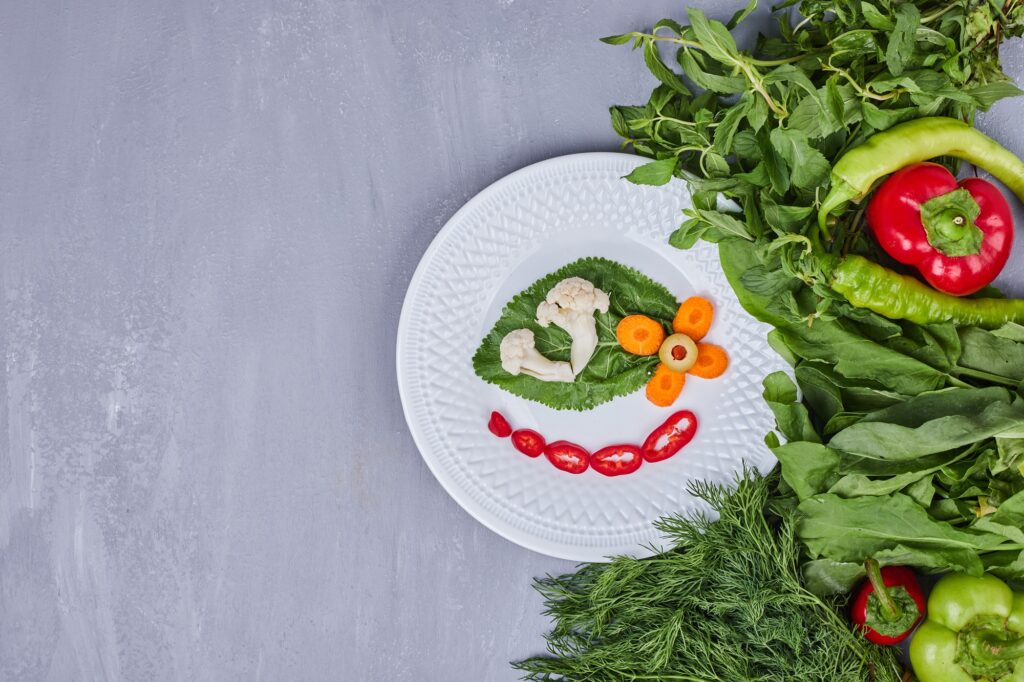Healthy Food for Weight Loss: Your Guide to Shedding Pounds Naturally

Losing weight can feel like an uphill battle, but it doesn’t have to be. By focusing on healthy food choices, you can achieve sustainable weight loss while improving your overall health. This guide breaks down the best foods, habits, and tips to make your journey easy and enjoyable.
Table of Contents
Why Healthy Food is Key to Weight Loss
The foundation of successful weight loss lies in eating nutrient-dense foods that fuel your body while keeping calories in check. Healthy food not only help create a calorie deficit but also provide the vitamins and minerals you need to thrive.
Key Nutrients That Promote Weight Loss
1. Proteins
Protein is essential for weight loss because it boosts metabolism and reduces hunger. Include these in your diet:
- Lean meats (chicken, turkey, fish).
- Plant-based proteins (lentils, chickpeas, tofu).
- Eggs and dairy (Greek yogurt, cottage cheese).
2. Fiber
Foods rich in fiber keep you full longer, preventing overeating. Examples include:
- Fruits (berries, apples).
- Vegetables (broccoli, spinach).
- Whole grains (oats, quinoa).
3. Healthy Food Fats
Contrary to popular belief, not all fats hinder weight loss. Healthy Food fats help regulate hormones and support satiety. Try these:
- Avocado.
- Nuts and seeds.
- Olive oil.
4. Complex Carbohydrates
Unlike refined carbs, complex carbohydrates provide steady energy. Add these to your meals:
- Brown rice.
- Sweet potatoes.
- Whole-grain bread.
Top Foods to Include in Your Weight Loss Diet

Fruits
- Berries: Packed with antioxidants and low in calories.
- Grapefruit: Known for its fat-burning properties.
- Apples: A crunchy, satisfying snack.
Vegetables
- Leafy greens: Spinach, kale, and arugula are low-calorie powerhouses.
- Cruciferous vegetables: Broccoli and cauliflower provide fiber and nutrients.
Whole Grains
- Quinoa: High in protein and versatile.
- Oats: A great breakfast option for sustained energy.
Snacks
- Greek yogurt with berries: High in protein and delicious.
- Veggie sticks with hummus: Crunchy and satisfying.
Table: Best Foods for Heart Patients Seeking Weight Loss
| Food | Benefits | How to Include |
| Oats | Lowers cholesterol and provides fiber | Breakfast with fruit or milk |
| Leafy greens | Rich in vitamins and low in calories | Salads, soups, or sautéed |
| Salmon | Omega-3 for heart and weight loss | Grilled or baked |
| Walnuts | Heart-healthy Food fats | Add to salads or snacks |
| Berries | Antioxidants and low-calorie sweetness | Eat fresh or in smoothies |
Meal Planning Tips for Weight Loss
Balanced Meals
Use the plate method: half your plate vegetables, a quarter lean protein, and a quarter whole grains. This ensures balanced nutrition while supporting weight loss.
Prep in Advance
Meal prepping reduces the likelihood of unhealthy food choices. Prepare:
- Overnight oats for breakfast.
- Grilled chicken and veggies for lunch or dinner.
What to Avoid
To achieve sustainable weight loss, limit or avoid:
- Processed foods: Chips, cookies, and ready-made meals are calorie-dense with little nutritional value.
- Sugary drinks: Sodas and sweetened juices add unnecessary calories.
- Refined carbs: White bread, pastries, and sugary cereals spike blood sugar levels.
The Role of Hydration in Weight Loss
Don’t underestimate water! Staying hydrated boosts metabolism and can help curb hunger. Aim for at least 8 glasses of water daily, and try metabolism-boosting drinks like green tea.
Exercise and Weight Loss

Pairing healthy food with regular physical activity maximizes weight loss. Whether it’s walking, swimming, or strength training, find an activity you enjoy to burn extra calories.
Conclusion
Healthy food is the cornerstone of effective weight loss. By focusing on nutrient-dense options like lean proteins, whole grains, and vegetables, you can shed pounds while feeling energized and satisfied. Remember, weight loss is not about deprivation but making smarter choices. Start incorporating these foods today and see the difference they make in your journey! You may also be like “Which Food is Best for Heart Patients?“
FAQs for Readers
Which food is best for weight loss?
The best foods for weight loss are those rich in protein, fiber, and healthy food fats. Examples include lean meats like chicken and fish, plant-based proteins like lentils and tofu, and whole grains like quinoa and oats. Adding plenty of vegetables such as broccoli, spinach, and kale can also help because they are low in calories and high in nutrients.
What is the healthiest meal for losing weight?
A healthy meal for weight loss includes a balance of lean protein, complex carbohydrates, and healthy food fats. For instance, grilled salmon with quinoa and a side of steamed vegetables like broccoli and carrots is a great choice. This combination provides essential nutrients, keeps you full, and supports your weight loss goals.
How to lose 10 kg weight in 1 month?
Losing 10 kg in one month is an aggressive goal that requires dedication to a strict calorie deficit, regular exercise, and proper hydration. Focus on eating whole, unprocessed foods, avoid sugary and fried foods, and incorporate both cardio and strength training into your routine. Always consult a healthcare provider before attempting rapid weight loss to ensure it’s safe for you.
How to lose 10 pounds in 2 weeks?
To lose 10 pounds in two weeks, you need to create a significant calorie deficit through diet and exercise. Focus on eating nutrient-dense foods like lean proteins, vegetables, and whole grains while cutting out refined sugars and processed foods. Engage in high-intensity workouts such as interval training and maintain consistency. Adequate sleep and hydration are also crucial to achieving this goal safely.
How to slim in 7 days?
Slimming down in seven days requires a temporary focus on a strict diet and increased physical activity. Opt for high-protein, low-carb meals, drink plenty of water, and avoid high-sodium foods to reduce bloating. Light cardio or yoga can help tone muscles while managing stress. Keep in mind that long-term results require sustained lifestyle changes.
How to do fasting correctly?
Fasting should be approached carefully to ensure it is beneficial and not harmful. Start with intermittent fasting, such as the 16:8 method, where you fast for 16 hours and eat during an 8-hour window. Focus on eating nutrient-rich foods during your eating window and stay hydrated throughout the day. Avoid overcompensating with large meals after fasting, and consult a doctor if you have any health concerns.



One Comment